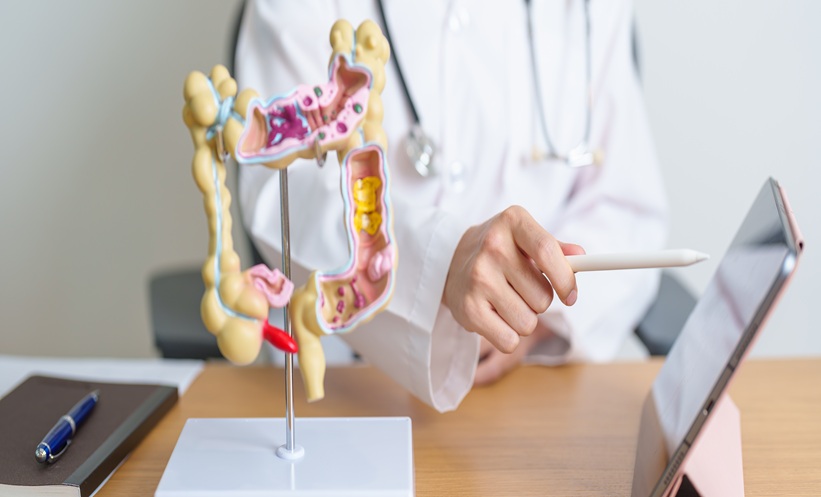Author: Ada Enesco, EMJ, London, UK
Citation: EMJ Neurol. 2024;12[1]:29-32. https://doi.org/10.33590/emjneurol/ZXHV6192.
![]()
DEEP BRAIN STIMULATION FOR MOVEMENT DISORDERS
Publications in the field of DBS have been increasing exponentially since 2000, explained Moro, and movement disorders are the area in which DBS has the most success. DBS of the subthalamic nucleus (STN) is now a recognised surgical treatment option in advanced Parkinson’s disease (PD), and continues to be effective beyond 15 years from the time of intervention.1 The EAN and Movement Disorder Society (MDS) have published guidelines for invasive treatment in PD, with strong evidence that DBS is effective in relieving motor symptoms not only in advanced PD, but also in early PD with motor fluctuations.2
The landscape of DBS device development has undergone huge advances; for instance, in the field of electrodes, the use of directional leads can now allow for a more targeted therapeutic effect, avoiding potential adverse events. Moro also highlighted the emerging role of subthalamic beta-band activity as a feedback signal for DBS, and a real-time ‘biomarker’ of PD motor symptom severity. Beta-band activity is particularly concentrated in the motor area of the STN in patients with PD, where the electrode is placed for stimulation. The higher the energy supplied to the STN, the stronger the suppression of Parkinsonian beta oscillations, leading to better patient outcomes in terms of rigidity and bradykinesia. Moro explained that this neurostimulation is able to ‘normalise’ the pathological brain patterns associated with PD. A similar phenomenon has also been observed in theta activity of patients with dystonia, with recent data suggesting a selective modulation of the cortico-basal ganglia network activity during globus pallidus internus DBS.3
Based on this exciting data, Moro introduced the concept of adaptive stimulation, which could enable the reading of patient-specific electrical signals with electrodes, and react accordingly to fine-tune the voltage current sent to the brain. “How could adaptive/closed-loop stimulation improve the current DBS outcome in movement disorders?” he asked. Permanent electrodes can now record beta activity in patients with PD, both at home and in the clinic, and modulate this activity in real-time. Moro explained that future focus should lie in improving stimulation programming, with faster programming and more effective paradigms; helping to better understand pathophysiologic biomarkers for gait and balance issues, as well as neuropsychological issues; and reducing unnecessary stimulation with less DBS-induced dyskinesia, dysarthria, and ataxia, and potentially less maladaptive stimulation effects. Moro added that the new era of digital health, AI, and neuroimaging will also revolutionise the DBS field in the near future.
HIGH-INTENSITY FOCUSED ULTRASOUND ABLATION
Raul Martinez-Fernandez, Centro Integral de Neurociencias HM Cinac, Madrid, Spain, explained that focused ultrasound (FUS) lies in the range of non-invasive to mildly invasive neuromodulation. He opened his session discussing ablation, the only FUS approach currently approved for clinical use. High-intensity FUS thermoablation uses a temperature increase to perform lesions on patients with PD, and carries the key advantage of not requiring any surgical incisions, as opposed to craniectomy or brain penetration, and producing the lesion progressively and in a controlled manner.
A lot of the evidence underlying the performance of a lesion is based on neuromodulation of abnormal brain networks. Recent findings from thalamotomy for essential tremor and PD showed that it led to the reversal of neural networks or metabolic patterns related to these conditions. In a milestone study in 2016, patients who underwent FUS thalamotomy showed significantly higher improvement in tremor compared to the sham procedure group.4 Furthermore, across various studies of FUS thalamotomy, FUS subthalamotomy, and globus pallidus FUS for PD, treated patients underwent a significant 62% reduction in tremor, 52% reduction in Parkinsonism, and 69% treatment response (≥3 point increase in dyskinesia or motor scale) compared to the sham arm, respectively.
Martinez stressed that long-term follow-up of patients is crucial, as PD is a progressive, neurodegenerative condition. In a recent study, Martinez et al.5 found that, after 3 years, the effect of a well-located lesion is sustained, with patient symptoms remaining more controlled than at baseline.
Although side effects, such as gait and speech impairment, tingling, and motor weakness, are frequent after FUS ablation, they usually resolve over the weeks or months following FUS.
Beyond unilateral ablation, Martinez also touched on bilateral ablation. The bilateral approach, historically associated with more complications, has been revisited in recent studies with the less invasive FUS technique. However, these studies are still preliminary, and Martinez emphasised that selecting the right patients is crucial in order to maximise therapeutic effects and minimise side effects.
Summarising the indications for FUS ablation, Martinez listed focal motor impairment (e.g., tremor, asymmetrical Parkinsonism, dystonia), medically refractory patients, and patients who are disabled. FUS ablation has been refined over the past few years, and will continue to improve in future years. Critical learning points for clinicians will include patient selection, improvement in treatment performances through technological advances, and patient management and follow-up. He stressed the importance of selecting the right approach, such as DBS or FUS, for the right patient. “These are not competitive, but complementary tools,” he said.
BLOOD-BRAIN-BARRIER OPENING
Martinez moved on to another application of FUS, moving away from ablation, to low intensity blood-brain-barrier (BBB) opening. This approach does not aim to treat conditions symptomatically, but to slow down the neurodegenerative process. It consists of the injection of a contrast agent in the bloodstream, and delivery of low intensity energy on focal areas of the brain. Different to thermoablation, BBB opening produces a mechanical effect, opening the tight junctions of the BBB. Phase I studies for AD, amyotrophic lateral sclerosis, and PD have now been conducted, including a pilot exploratory study of striatal BBB opening in PD,6 as the striatum is one of the key structures of neurodegeneration in PD. In another preliminary 2024 study for AD, ultrasound BBB opening was performed in the frontal lobe of one hemisphere, using the non-treated hemisphere as a control, and coupled with aducanumab monthly for 6 months, which led to a significant reduction in amyloid burden in the treated hemisphere, increasing the therapeutic effect of aducanumab.7
This approach is also receiving a lot of attention in neuro-oncology, with several ongoing studies assessing the effect of BBB opening in the borders of operated brain glial tumours to increase the effect of chemotherapy. Martinez added that BBB also holds promise as a diagnostic tool, as a form of liquid biopsy to detect molecules for glial tumours or neurodegeneration(e.g., α-synuclein, tau) travelling into the bloodstream.
LOW-INTENSITY FOCUSED ULTRASOUND NEUROMODULATION
The last FUS approach discussed by Martinez was low-intensity FUS neuromodulation, which is also not a thermal, but mechanical, type of modulation. The main advantage of this novel approach, compared to transcranial magnetic stimulation or electrical stimulation, is that it enables clinicians to reach deep brain areas, such as the globus pallidus internus or STN. Studies have suggested that this approach works via modulation of calcium mechanosensitive ion channels, and pathology data from animal models have shown that it is a ‘harmless’ technique. Preliminary studies have applied low-intensity FUS neuromodulation to patients with drug-resistant epilepsy, PD, and essential tremor, with promising results.
Martinez summarised that FUS can be used in different modalities, with different objectives. While FUS ablation is clinically approved and effective in treating essential tremor and PD, FUS with BBB opening is now a potential technique for disease modification in neurodegeneration, and FUS neuromodulation has emerged as a new, non-invasive tool.







